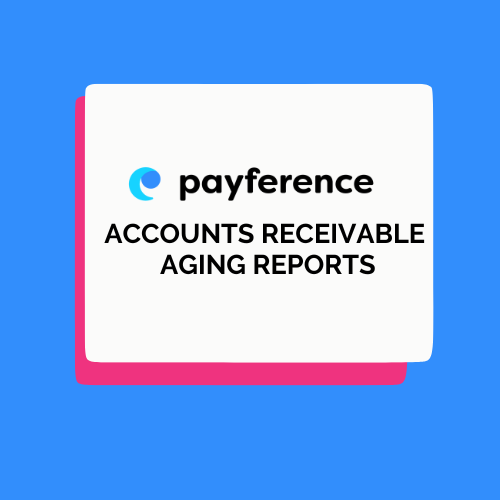5 Tips to Improve Your Accounts Receivable Process
Did you know that you can have robust sales, a winning business model, stellar employees and still...
By: Payference on Dec 1, 2023 4:29:46 PM

Effective management of accounts receivable is crucial for maintaining a healthy cash flow and sustaining a successful business. Two essential metrics in this regard are accounts receivable aging by invoice date and due date. In this blog, we'll delve into the significance of these metrics and how they can empower businesses to streamline their receivables management processes.
Accounts receivable aging is a method used by businesses to categorize and track their outstanding invoices based on the length of time they have been outstanding. It provides a snapshot of the company's receivables portfolio and helps identify potential issues in the collection process.
This approach categorizes outstanding invoices based on the date of issuance. Typically, invoices are grouped into buckets such as 0-30 days, 31-60 days, 61-90 days, and 90+ days past due. This breakdown allows businesses to assess how long invoices have been outstanding and prioritize collection efforts accordingly.
Early Identification of Issues:
By categorizing invoices based on their age, businesses can quickly identify which invoices are at risk of becoming delinquent. This early detection enables proactive measures to be taken to prevent payment delays.
Prioritizing Collection Efforts:
The aging report helps businesses prioritize their collection efforts. Invoices in the 0-30 days category may require gentle reminders, while those in the 90+ days category may necessitate more assertive action.
Cash Flow Management:
Monitoring accounts receivable aging by invoice date provides insights into the cash flow cycle. Businesses can anticipate future cash inflows and plan their operational activities more effectively.
Bank Covenants and Audit Reporting:
Bank covenants are usually by invoice date. During an ABL (Asset-Based Lending) field examination, the standard criterion for past-due invoices may extend to 90 days beyond the invoice date. Irrespective of the specified payment terms, banks may consider the 90-day threshold as a point where the likelihood of successful collection diminishes, posing a risk they are unwilling to undertake in their lending decisions. Hence, aging reports based on invoice dates are favored in this context.When most of your customers are on the same credit terms, invoice date may not be a great metric for the purposes of risk management.
Accounts receivable aging by due date categorizes outstanding invoices based on their payment due dates. This approach provides a different perspective on the aging process, focusing on when payments were initially expected.
Timely Collection Strategies:
By focusing on due dates, businesses can implement targeted collection strategies before invoices become overdue. Early communication with customers can help resolve issues and facilitate on-time payments.
Improved Customer Relations:
Proactive communication about upcoming due dates demonstrates a commitment to customer relationships. Businesses can address any concerns or issues before they impact payment timelines, fostering a positive customer experience.
Accuracy in Cash Flow Projections:
Monitoring accounts receivable aging by due date enhances the accuracy of cash flow projections. This approach allows businesses to forecast when payments are expected, enabling better financial planning.
In conclusion, accounts receivable aging by invoice date and due date are valuable tools for businesses seeking to optimize their cash flow and enhance receivables management. By gaining insights into the aging process from different perspectives, businesses can tailor their collection strategies, improve customer relations, and ensure a healthier financial future. Regular monitoring and strategic planning based on these metrics are key components of successful accounts receivable management.
If you’re looking for a way to streamline your collections process and automate accounts receivable, be sure to consider Payference. We’re helping customers solve these challenges every day, but don’t take our word for it. Check out some of our favorite customer success stories.
Did you know that you can have robust sales, a winning business model, stellar employees and still...
Whatever the size of your business, effective collections management is a crucial aspect to...
Expanding the volume and risk of collections can be adverse on cash flow and working capital. The...